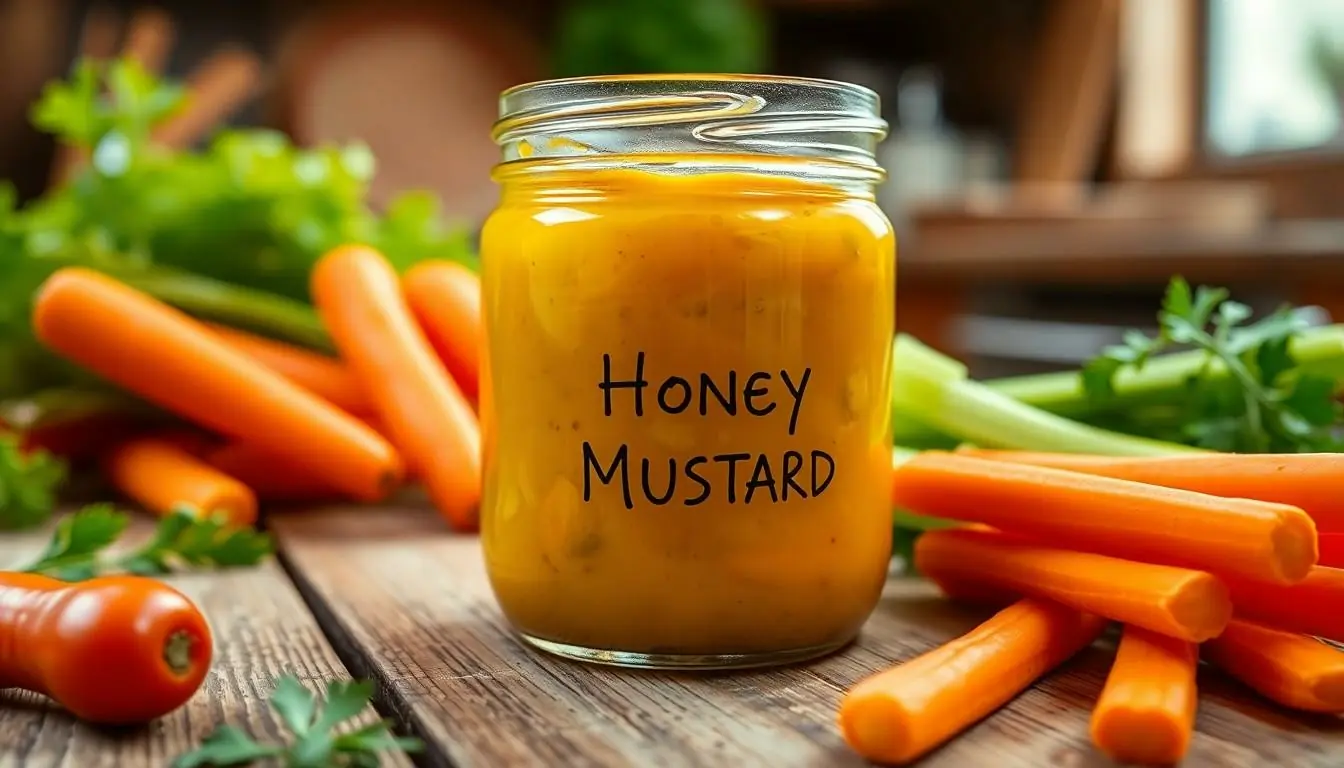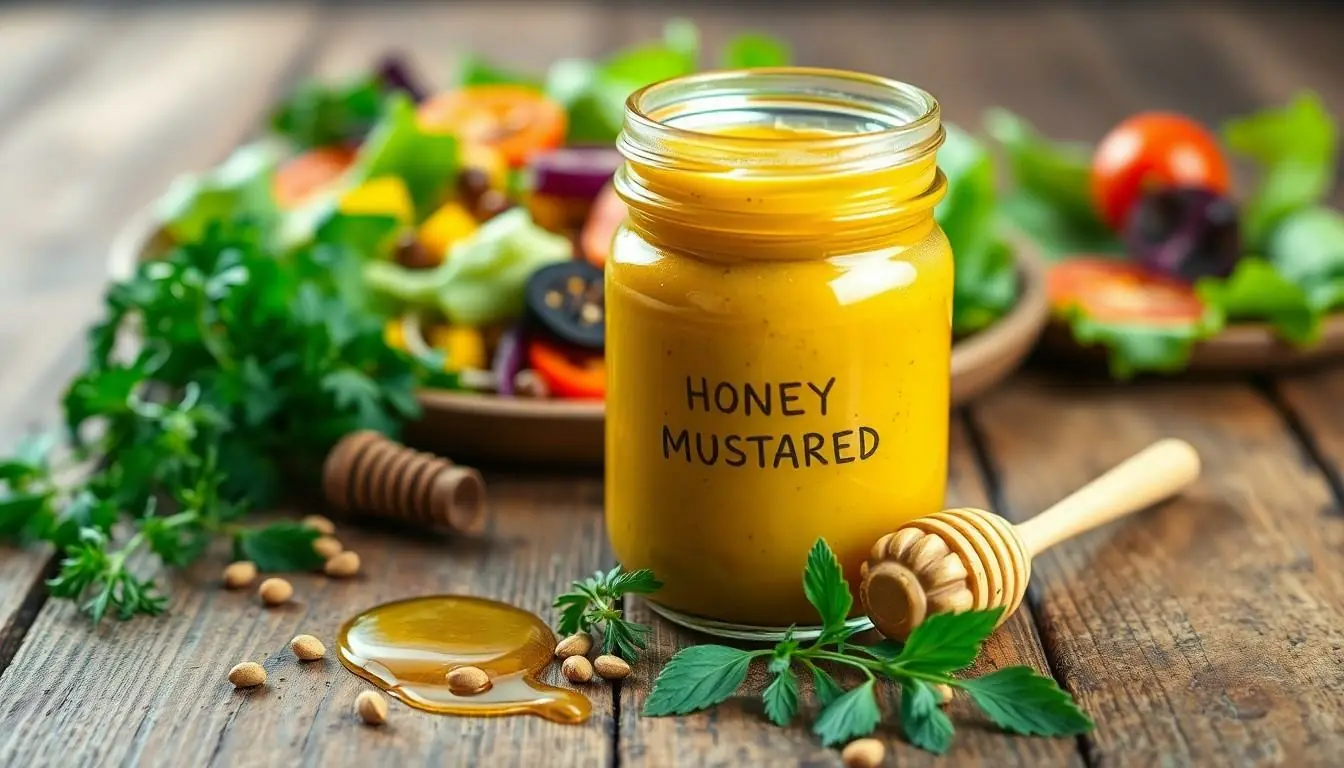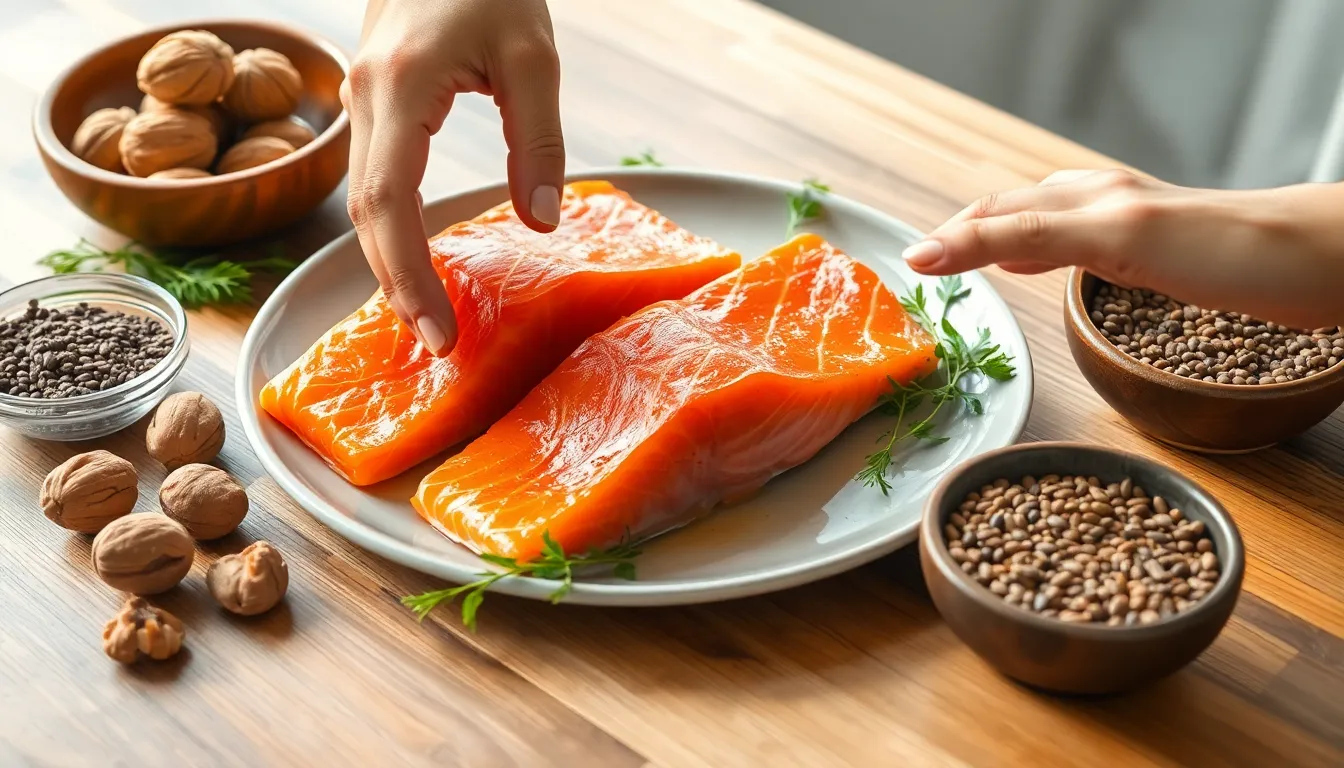Honey mustard: the sweet and tangy delight that can turn any mundane meal into a flavor fiesta. But while it dances on your taste buds, have you ever wondered what it’s doing for your waistline? This golden condiment might just be the secret weapon you’ve been missing in your culinary arsenal.
Table of Contents
ToggleOverview of Honey Mustard
Honey mustard combines honey and mustard, creating a condiment with a unique blend of sweet and tangy flavors. It complements many dishes like sandwiches, salads, and marinades. Nutritionally, honey mustard provides certain benefits while also containing calories and carbohydrates.
A typical serving size of honey mustard, around 1 tablespoon, typically contains approximately 30 to 50 calories. Sugars account for about 2 to 4 grams, mainly from the honey content. Mustard typically contributes minimal fats, often less than 1 gram per serving, making it a low-fat option.
Honey mustard does contain some vitamins and minerals. It often includes small amounts of calcium and potassium. Additionally, the presence of honey provides a source of antioxidants. Antioxidants can help combat oxidative stress in the body.
Sodium content varies significantly among different brands and recipes. It’s common to find honey mustard with sodium levels ranging from 100 to 250 milligrams. Purchasing low-sodium versions may be beneficial for those monitoring sodium intake.
Honey mustard offers flavor with a reasonable nutritional profile. Choosing to use it in moderation can complement a balanced diet. Individuals looking for a tasty alternative to higher-calorie condiments might find honey mustard a suitable option.
Nutritional Composition

Honey mustard offers a balanced nutritional profile that enhances its appeal as a condiment. Understanding its composition is key for those looking to make informed dietary choices.
Calories in Honey Mustard
A standard serving size of honey mustard typically contains 30 to 50 calories. The caloric content primarily depends on the specific recipe and ingredients used by different brands. Most of the calories in honey mustard come from carbohydrates, particularly sugars derived from honey.
Macronutrients Breakdown
In terms of macronutrients, honey mustard generally has low fat content, with less than 1 gram per serving. Carbohydrates range from 7 to 12 grams, depending on the quantity of honey. Protein levels remain minimal, often around 0.1 to 0.5 grams. Those monitoring macronutrient intake can appreciate the energy-dense yet low-calorie nature of this condiment.
Micronutrients Present
Honey mustard also contains small amounts of vital micronutrients. Calcium and potassium are found within the mix, aiding in bone health and muscle function. Additionally, it holds antioxidants from honey, which may contribute to overall well-being. Sodium content varies, so checking individual labels remains essential for those tracking sodium intake.
Health Benefits of Honey Mustard
Honey mustard combines taste with health benefits. It contains small amounts of vitamins and minerals that contribute to overall well-being.
Antioxidant Properties
Honey’s antioxidants help combat oxidative stress. Studies show these compounds may reduce inflammation and improve heart health. Polyphenols found in honey can support immune function. Mustard seeds contain glucosinolates, which offer additional antioxidant benefits. Consuming honey mustard in moderation promotes these protective effects while enhancing meals with flavor.
Potential Risks and Considerations
High sugar content in honey mustard can be a concern for those managing blood sugar levels. Excessive sodium might also pose risks, especially for individuals with hypertension. It’s essential to check labels for hidden sugars and sodium levels. Allergies to mustard seeds can trigger reactions in sensitive individuals. Moderation remains key to enjoying honey mustard’s benefits without negative effects.
Culinary Uses of Honey Mustard
Honey mustard serves as a versatile ingredient in various culinary applications. It enhances sandwiches and wraps, providing a sweet tang that complements meats and vegetables. Salads benefit from a drizzle of honey mustard dressing, adding flavor without overwhelming the other ingredients.
Marinades often include honey mustard due to its ability to tenderize meats while imparting a unique taste. Grilled chicken, pork, and fish absorb the flavors well, resulting in juicy and flavorful dishes. Additionally, honey mustard can elevate dips, making it ideal for chicken tenders and vegetable platters.
In baking, honey mustard finds its place in glazes for roasted dishes, contributing to a caramelized crust that adds visual appeal and taste. Vegetables roasted with honey mustard develop a delightful caramelization during cooking, making them a hit among diners.
Sauces combine honey mustard with ingredients like yogurt or mayonnaise, balancing creaminess with a sweet kick. This combination works well as a condiment for burgers or on top of baked potatoes, satisfying diverse palates.
Distinct flavors mingle when honey mustard pairs with cheese boards, enhancing the taste of cheeses and charcuterie. The sweet and tangy notes contrast with the richness of the cheeses, providing a refreshing palate cleanser.
Honey mustard also acts as a secret ingredient in homemade barbecue sauces, adding depth and complexity. Its nutritional profile can make it a healthier alternative to high-calorie sauces, appealing to health-conscious consumers.
Culinary creativity shines through when integrating honey mustard into everyday meals, showcasing its ability to transform dishes with sweet and tangy flavors.
Honey mustard stands out as a delightful condiment that not only enhances flavor but also offers a balanced nutritional profile. With its low calorie count and minimal fat content, it serves as a healthier alternative to many traditional sauces. The presence of antioxidants and essential micronutrients adds to its appeal for those seeking nutritious options.
While enjoying honey mustard, it’s important to be mindful of sugar and sodium levels, especially for those with specific dietary needs. By incorporating this versatile condiment into meals, individuals can elevate their culinary experiences while benefiting from its unique health properties. Moderation remains key to maximizing its advantages without potential drawbacks.





